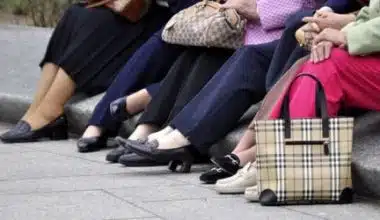While safety can vary within any region, South America is generally known for providing a secure environment for both locals and visitors. The safest countries in South America are the countries within the continent of South America that are considered to have relatively low crime rates. They have stable political environments and overall safe conditions for residents and travelers. These countries are often characterized by efficient law enforcement, well-developed infrastructure, and effective safety measures. It’s important to note that safety conditions can change over time, so it’s recommended to check the latest travel advisories and information before planning a trip.
Safest Countries In South America
The Safest Countries in South America generally refer to those countries that have lower crime rates and a more stable political and economic environment. This makes them safer for visitors and residents alike. The ranking of the safest countries in South America can vary depending on the source and the criteria used but generally seeks to guide travelers and others interested in visiting or living in the region.
Here are some of the safest countries in South America:
#1. Uruguay
Uruguay is currently considered the safest country in South America. It has been ranked at the top of the safest countries in the region for several years. It has a low crime rate, a stable political system, and a strong economy compared to other countries in the region.
#2. Chile
Chile is another country in South America that has a reputation for being safe. It is considered to be one of the most stable and prosperous countries in the region. The crime rate is relatively low, especially when compared to other countries in the region.
#3. Argentina
Argentina is a popular tourist destination in South America and is also considered to be relatively safe. The country has a diverse landscape, rich culture, and vibrant nightlife. However, it’s important to be aware of your surroundings and exercise caution, especially in big cities like Buenos Aires.
#4. Paraguay
Paraguay is a landlocked country that is generally considered safe for tourists, with lower crime rates and a friendly population.
#5. Ecuador
Ecuador is known for its diverse landscape, including the Galapagos Islands, and is considered relatively safe with lower crime rates compared to some other South American countries.
#6. Peru
Many tourist destinations in Peru are considered safe, though visitors should still be aware of their surroundings. The country is known for its rich history and natural beauty, including Machu Picchu.
#7. Bolivia
Bolivia is a landlocked country known for its high elevation and diverse landscape. While safety can vary depending on the region, many tourist destinations are considered safe for visitors.
#8. Suriname
Suriname is known for its peaceful and stable political environment. It’s a lesser-known travel destination but offers a unique experience.
#9. Guyana
Guyana is improving its safety conditions and promoting tourism. While some areas might have safety concerns, the country is taking steps to enhance security.
#10. French Guiana
As an overseas department of France, French Guiana benefits from French security standards and regulations.
Factors to Determine the Safest Countries in South America
The safety of countries in South America can be influenced by a combination of factors that contribute to their overall security and stability. These factors can vary from country to country.
Here are some factors of safety:
#1. Political Stability
Countries with stable political systems and well-functioning governments tend to have better control over law enforcement and security measures.
#2. Effective Law Enforcement
Strong and effective law enforcement agencies can deter and respond to criminal activities, maintaining order and safety.
#3. Low Crime Rates
Countries with lower rates of violent crime, theft, and other criminal activities are generally considered safer.
#4. Rule of Law
Countries that uphold the rule of law and have a fair and efficient judicial system contribute to safety by ensuring justice and accountability.
Societies with strong community bonds and shared values often experience lower crime rates and better overall safety.
#6. Economic Development
Higher levels of economic development can lead to improved infrastructure, education, and healthcare systems, which contribute to safety.
#7. Quality of Healthcare
Access to quality healthcare services ensures that injuries and emergencies are promptly addressed, promoting safety.
#8. Educational Opportunities
Countries that prioritize education tend to have lower crime rates and higher levels of social development.
#9. Tourism Infrastructure
Countries with a developed tourism industry tend to invest in safety measures to attract and protect visitors.
#10. Natural Disasters Preparedness
Nations that are well-prepared for natural disasters can respond effectively, reducing risks to public safety.
#11. Community Policing
Strong relationships between law enforcement and communities foster trust and cooperation, enhancing safety.
#12. Cultural Values
Societies that value non-violence, respect for others, and social harmony contribute to safer environments.
#13. International Relations
Countries that maintain positive relations with neighbors and the international community often experience enhanced security.
#14. Media Freedom
Independent and responsible media can contribute to transparency and accountability in matters of safety.
#15. Government Policies
Policies related to crime prevention, public safety campaigns, and community engagement can influence overall safety.
#16. Emergency Services
The availability of emergency services and quick response times contribute to overall safety.
Benefits That Can Be Enjoy Living in Safest Countries
Traveling to the safest countries in South America offers numerous benefits that contribute to a positive and enjoyable travel experience.
Here are some advantages:
#1. Peace of Mind
Safety concerns are minimized, allowing you to focus on exploring and enjoying your trip without constant worries.
#2. Cultural Immersion
With a sense of security, you can engage more deeply with the local culture, interact with locals, and experience authentic traditions.
#3. Exploration
You can freely explore cities, landmarks, and natural attractions without feeling restricted or concerned about safety risks.
#4. Relaxed Atmosphere
Safety contributes to a relaxed and stress-free atmosphere, enhancing your overall travel enjoyment.
#5. Outdoor Activities
In safe environments, you can engage in outdoor activities, nature hikes, and adventure sports with confidence.
#6. Quality of Life
Many safe countries boast high standards of living, well-maintained infrastructure, and access to quality healthcare and services.
#7. Culinary Adventures
You can savor local cuisine, street food, and dining experiences without worrying about food safety.
#8. Family-Friendly
Safe countries are often family-friendly, providing a secure environment for traveling with children and loved ones.
#9. Cultural Heritage
You can explore historical sites, museums, and architectural wonders with a sense of security and appreciation.
#10. Local Interactions
Interact more freely with locals, make new friends, and build meaningful connections without safety concerns.
#11. Efficient Travel
Safe countries often have efficient transportation systems, making it easier to navigate and explore various regions.
#12. Educational Opportunities
Learn about local traditions, languages, and customs safely and respectfully.
#13. Memorable Experiences
You’re more likely to have positive and memorable experiences when you can focus on enjoying the moment.
#14. Positive Reputation
Safe countries often have positive reputations, attracting more visitors and contributing to a thriving tourism industry.
#15. Personal Growth
Traveling to safe countries allows you to step out of your comfort zone, boosting your confidence and personal growth.
#16. Reliable Services
Enjoy reliable hospitality, accommodations, and tourism services that prioritize guest safety and satisfaction.
#17. Reduced Stress
The absence of safety concerns reduces travel-related stress, allowing you to fully unwind and rejuvenate.
#18. Inspiration and Reflection
Safe environments provide the perfect backdrop for introspection, inspiration, and connecting with your surroundings.
Tips On What To Do When Planning To Travel
Here are some general tips for travelers when traveling to the safest countries in South America:
- Research the country before you travel, and research your destination to learn about the culture, customs, and any specific safety concerns.
- Use official transportation, such as licensed taxis or public transportation, to avoid the risk of being robbed or assaulted.
- When choosing accommodations, stay in safe areas known for their low crime rates.
- Avoid risky behavior, such as excessive drinking, drug use, or walking alone at night.
- To avoid attracting unwanted attention, dress modestly, and avoid wearing expensive jewelry or carrying expensive gadgets with you.
- Keep your valuables safe and hidden in a secure location, such as at your hotel or a safe deposit box.
- Stay aware of your surroundings, especially in crowded areas, and be alert for any suspicious activity.
- Consider taking a self-defense class before your trip to learn basic techniques to protect yourself in case of an attack.
- Make copies of your passport, visas, and other important documents, and keep them in a separate location from the originals.
- Consider purchasing travel insurance that covers medical emergencies, travel delays, and other unforeseen events that can occur while traveling.
Least Safe Countries In South America
The least safe countries in South America are those countries within the continent that are characterized by higher levels of safety concerns. Including crime rates, political instability, and potentially hazardous conditions for residents and travelers. These countries may have challenges related to crime, civil unrest, inadequate infrastructure, and other factors that contribute to a perception of lower safety standards.
Here are some of the most dangerous countries in South America that can be unsafe for visitors:
#1. Venezuela
Venezuela is considered one of the most dangerous countries in the world, with high levels of violent crime and street crime, including carjacking, mugging, and kidnapping.
#2. Colombia
Colombia has made significant progress in improving its safety situation in recent years, but it still has high levels of violence and drug-related crime in some regions.
#3. Brazil
Brazil has high levels of violent crime, particularly in major cities such as Rio de Janeiro and São Paulo, where tourists are often targeted for robbery.
Which South American Country Is The Safest?
Uruguay is consistently ranked as the safest country in South America with a low crime rate, stable political system, and strong economy. Although, no country is completely safe and tourists should always exercise caution when traveling.
Which South American Country Is The Richest?
The richest country in South America is Chile with a GDP per capita of $25,110.20 in 2020 according to World Bank data. Chile is known for its economic wealth as well as its vibrant culture and history. Chile is the richest country in all of South America with exceedingly high living standards as well as a well-developed economy. Areas such as mining, manufacturing, personal services, and retail trade have bolstered the economy and made the country a leading contender in wealth on the world circuit.
What Are The Least Safe Countries To Visit In South America?
The least safe countries to visit in South America are Venezuela, Honduras, El Salvador, and Brazil. These countries have high crime rates and considerable safety risks for travelers. The tri-border area between Paraguay, Brazil, and Argentina is also considered a dangerous hotspot for drug trafficking and organized crime. It’s important to note that safety can vary depending on the region and visitors should always exercise caution when traveling.
Which Is Safer Brazil or Argentina?
Argentina is generally considered to be safer than Brazil. Although both countries have their share of safety concerns. Brazil has a higher crime rate and is generally considered more dangerous than Argentina. However, it’s important to note that safety can vary depending on the region and visitors should always exercise caution when traveling.
Which Is The Cheapest South American Country To Live In?
Bolivia is generally considered to be the cheapest South American country to live in. It has a low cost of living and travelers can easily live on $20 or less per day depending on their needs. Other affordable countries to live in include Ecuador and Peru. However, costs can vary depending on the region and individual lifestyle choices.
Which Country In South America Has Least Crime?
Uruguay has the lowest crime rate among South American countries, making it one of the safest countries to visit and live in. Other relatively safe countries in South America based on safety rankings include Chile, Argentina, Paraguay, and Ecuador. The safety situation can vary depending on the region and visitors should always exercise caution when traveling.
Conclusion
South America is one of the most diverse regions in the world, known for its rich culture, landscape, and history. But just like any other place in the world, safety is an important factor for travelers and locals alike. Some of the countries that are generally considered safe for travelers such as Uruguay, Chile, Argentina, Paraguay, Ecuador, Bolivia, Panama, and Costa Rica. The ranking of the safest countries in South America can vary depending on the criteria used.
Traveling to the safest countries in South America offers a relaxed, enriching experience where you can immerse yourself in local culture, and explore freely. You can engage in outdoor activities, enjoy culinary adventures, and build meaningful connections with locals. With minimized safety concerns, you can focus on exploration, personal growth, and creating lasting memories in a stress-free environment.
- THE MOST DANGEROUS PLACES IN THE WORLD IN 2023
- BEST SOLO TRIPS DESTINATIONS IN 2023
- IS IT SAFE TO TRAVEL TO COLOMBIA RIGHT NOW?
- BEST PLACES TO SOLO TRAVEL
- TOP SOUTH AFRICAN RESORTS IN 2023






